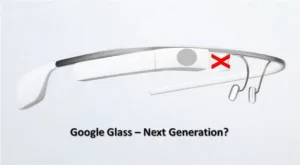When Google Glass pushed the idea of an augmented reality headset into the consumer electronics world, many saw this as the start of a new category. By now we know that several issues with the technology and social consequences made it a no-go for now. After stopping the Google Glass project some time age, Google promised to not give up on the idea, but to go back to the drawing board.
There are now several reports of rumors that Google is indeed working on the next generation Google Glass device. Jessica E. Lessin from The Information stated in an article that Google is actually working on three prototypes of the device under the umbrella of Project Aura. While two of them maybe combined for a total of two devices aiming at an announcement in the coming year, she continues that one will be a device with no screen.
It seems from her article, which is based on unnamed sources, the enterprise version will contain a screen similar to the first Google Glass device, the consumer version ditches the display to be an audio based device only. She does not say anything about the camera, but if social awkwardness plays a role, the camera maybe as much or even more offensive to people than the display function.
Analyst Comment
If all of this is true, it shows that augmented reality is facing an uphill battle in the consumer space. At least this is what Google seems to believe. Google has arguably the most data on consumer uptake based on their massive Explorer program and any hint that comes out of this data is worth listening to. Getting rid of the display and leaving the camera out would solve several issues in the users’ eyes. First of all, the social awkwardness may be a non-factor, unless people are concerned about wearing headphones, as this is what an augmented reality headset becomes without a display. Other issues are power consumption and touch controls. On the negative side, the whole device becomes just a version of Siri with voice response replacing the visual response of a near eye display. This is definitely a new idea on how to introduce augmented reality to the consumer. (NH)

